Juno Spacecraft – Return To Jupiter
Probing A Gas Giant!
Here you can check out Cool Facts about the Juno spacecraft! Juno became the second probe to orbit Jupiter in 2016. The probe entered a polar orbit to reduce the spacecraft's exposure to the intense radiation which exists close to Jupiter. Juno studied the gas giant’s composition, gravity field, magnetosphere and dynamic atmosphere to learn about its formation! Juno will end its mission by deliberately crashing into Jupiter.
Fast Summary Facts About The Juno Mission
- Type: Orbiter
- Destination: Jupiter
- Status: Ongoing
- Launch Weight: 3,625 kgs (7,992 lbs)
- Launch Location: Cape Canaveral, Florida
- Launch Date: August 5th 2011
- Jupiter Arrival: July 4th 2016 (polar orbit insertion)
- Deorbited Into Jupiter: TBC
- Planned Mission: 7 years
Cool Fun Facts About The Juno Spacecraft!
- Juno was named after Jupiter’s wife from Greek and Roman mythology who was able to peer through Jupiter’s clouds to reveal its true nature.
- The goal of the Juno spacecraft is to reveal the story of Jupiter's formation and evolution. It studied the planet’s gravity, magnetic fields and peered inside Jupiter’s dynamic atmosphere.
- The probe carries a plaque dedicated to Galileo Galilei. It also carries three Lego figures made of aluminium representing Galileo, the Roman god Jupiter and his wife the goddess Juno.
- The probe has been designed to resist damaging radiation which exists at Jupiter. Many of the electronics and computers that are onboard are contained within a titanium vault which acts like armour!
- Juno was launched by an Atlas V rocket.
- It took the Juno spacecraft nearly 5 years to travel to Jupiter and included a flyby of Earth for a gravity assist (which increased its speed by 3.9 km/s).
- The scientist working for NASA and the Jet Propulsion Laboratory (JPL) communicate with the probe via the Deep Space Network.
- Juno generates its electrical power from solar panels. This is unusual, normally probes operating beyond the asteroid belt use small nuclear generators (called RTGs) for power. This is because the Sun is 25 times stronger near Earth than at Jupiter.
- Juno’s solar arrays are the largest ever used on a planetary probe and generate as much power as your toaster at home!
- Initially, Juno was planned to first complete several 53-day polar orbits before altering course into a closer 14-day orbit. Unfortunately, due to an issue with the rocket thrusters, it was decided to leave Juno in its initial 53-day orbit.
- Five previous space missions have flown by Jupiter (Pioneer 10 & 11, Voyager 1, Voyager 2 and Ulysses) with Galileo previously orbiting Jupiter.
- The Juno orbiter completed 12 orbits (each taking 53 days) during its primary mission.
- To avoid the possibility of Juno impacting one of Jupiter’s moons and contaminating it with Earthly bacteria, the spacecraft will be intentionally sent on a collision course with the gas giant. I wonder who will come out on top?!
- The total cost of the Juno mission is expected to be over $1.1 billion USD.
- Future missions to Jupiter called the ‘Jupiter Icy Moons Explorer’ and ‘Europa Clipper’ are planned to launch in the early 2020’s!
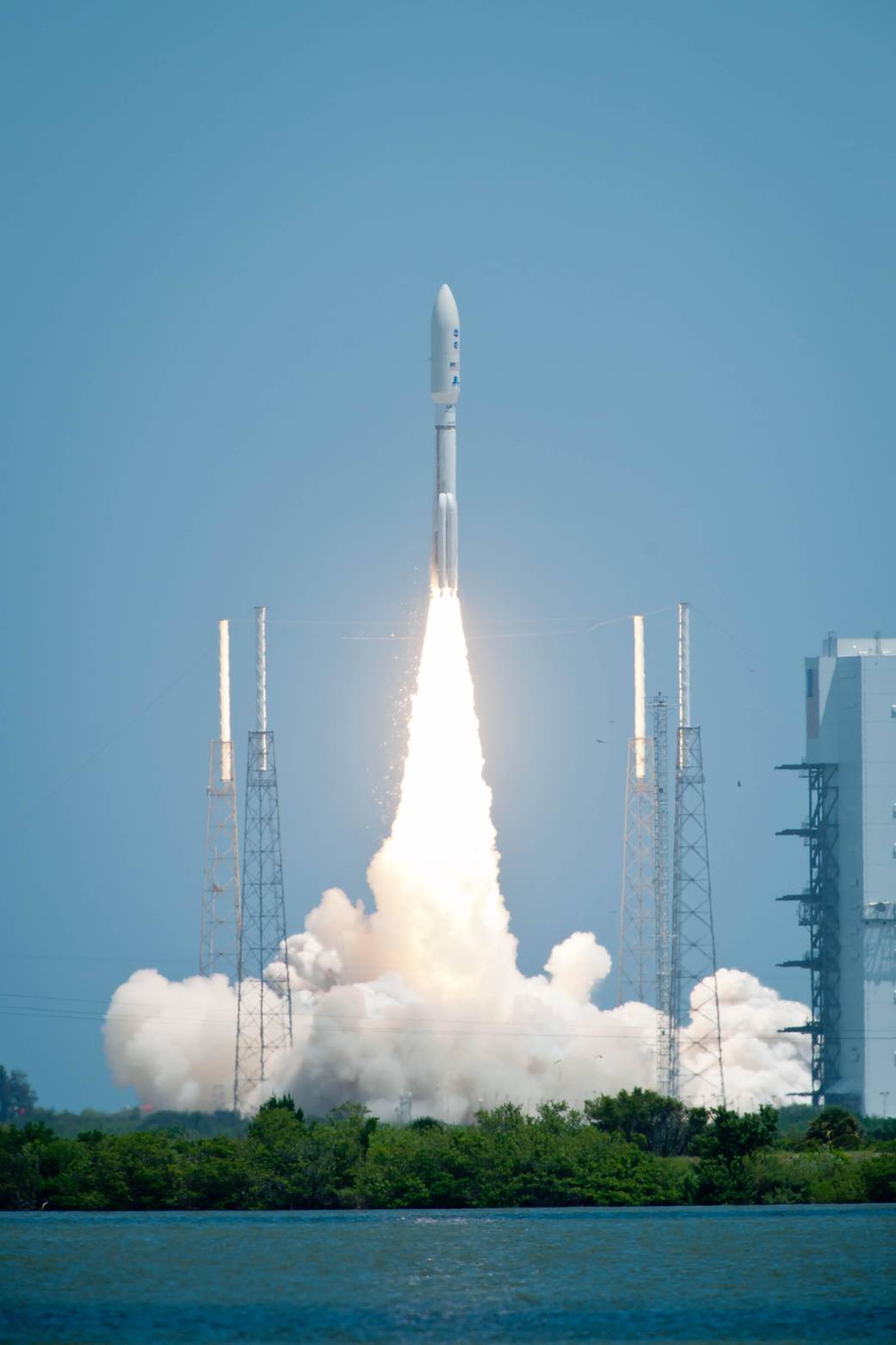
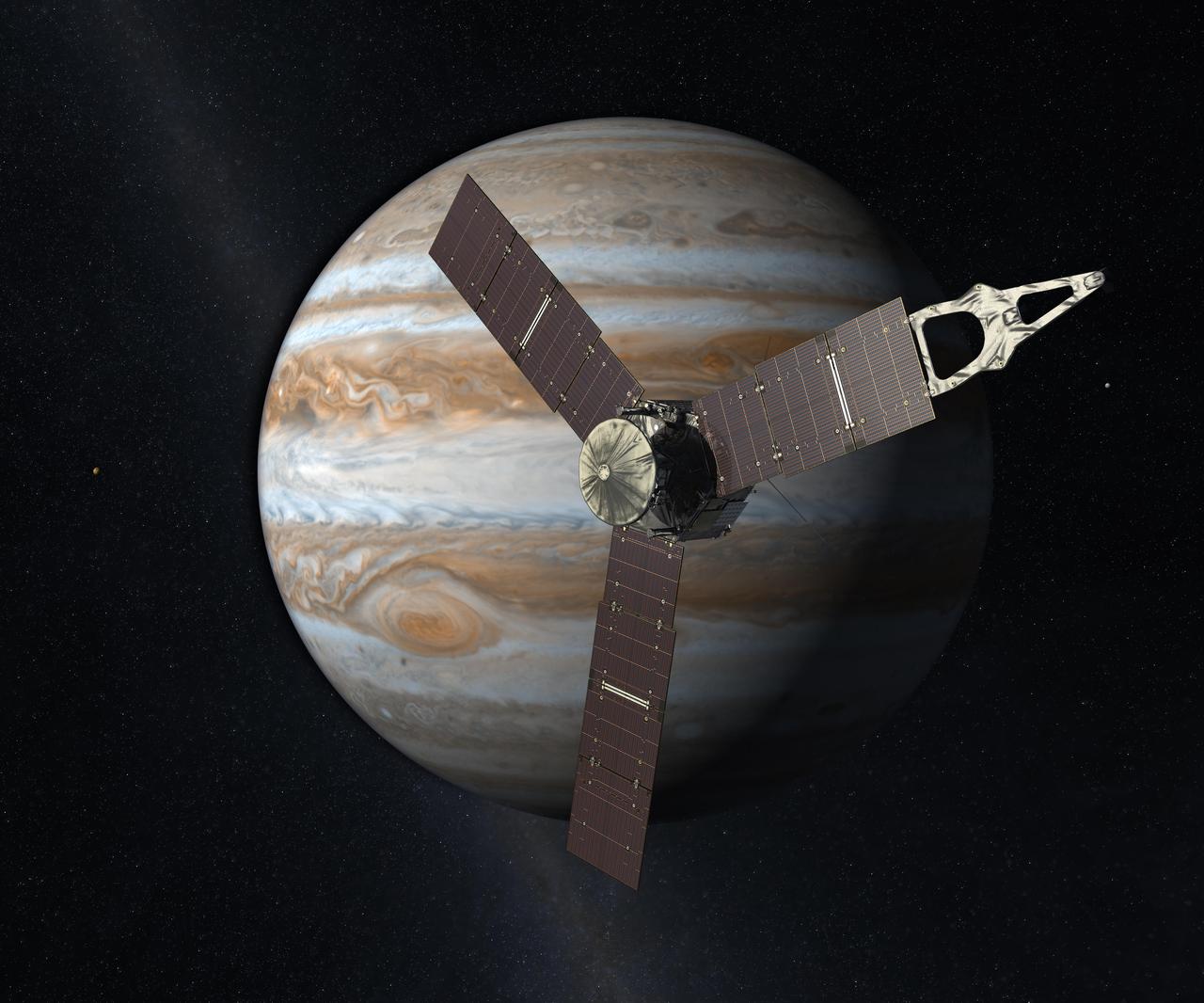
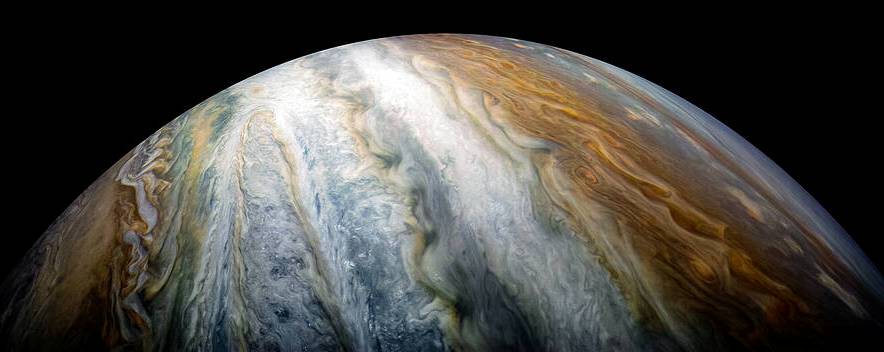
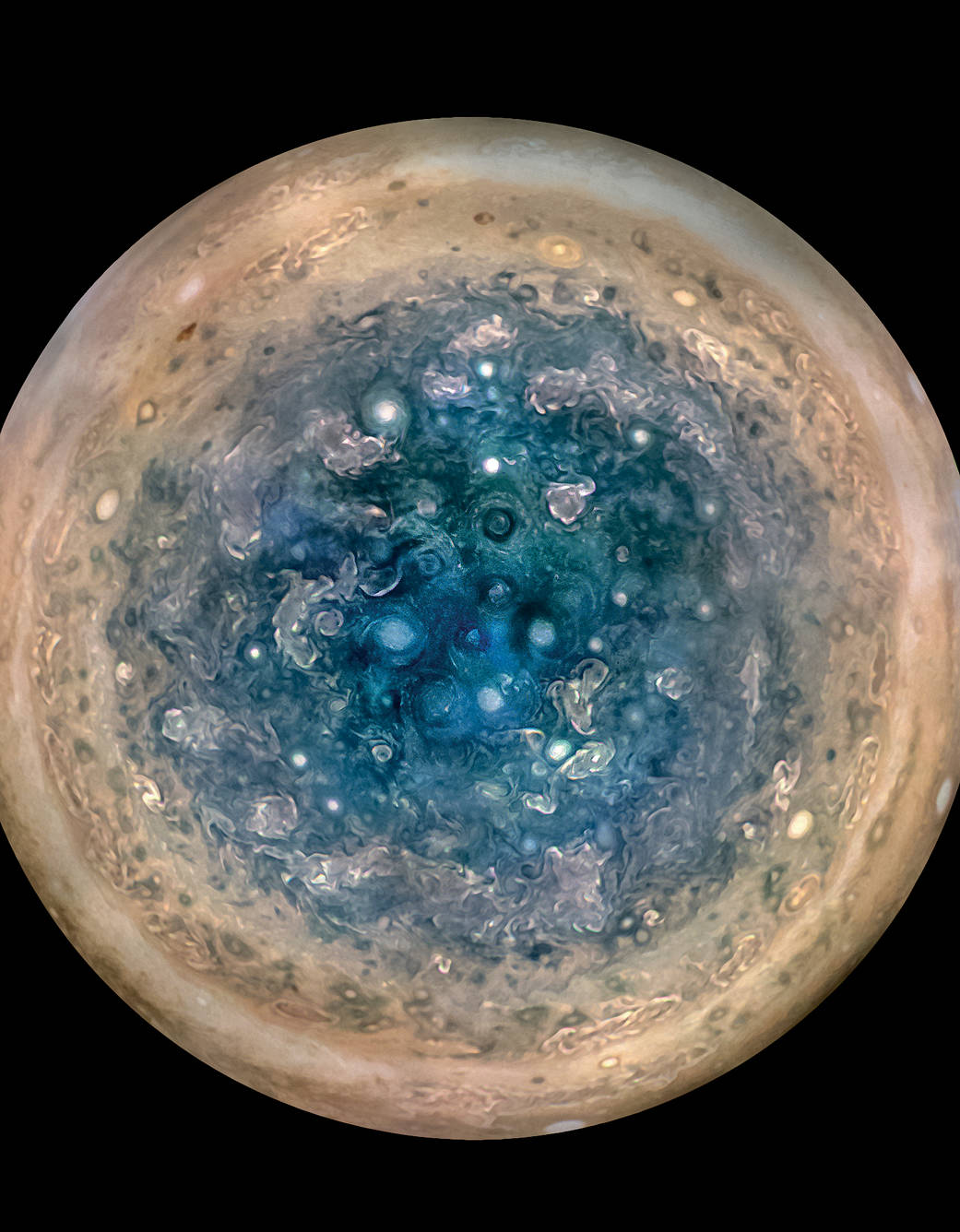
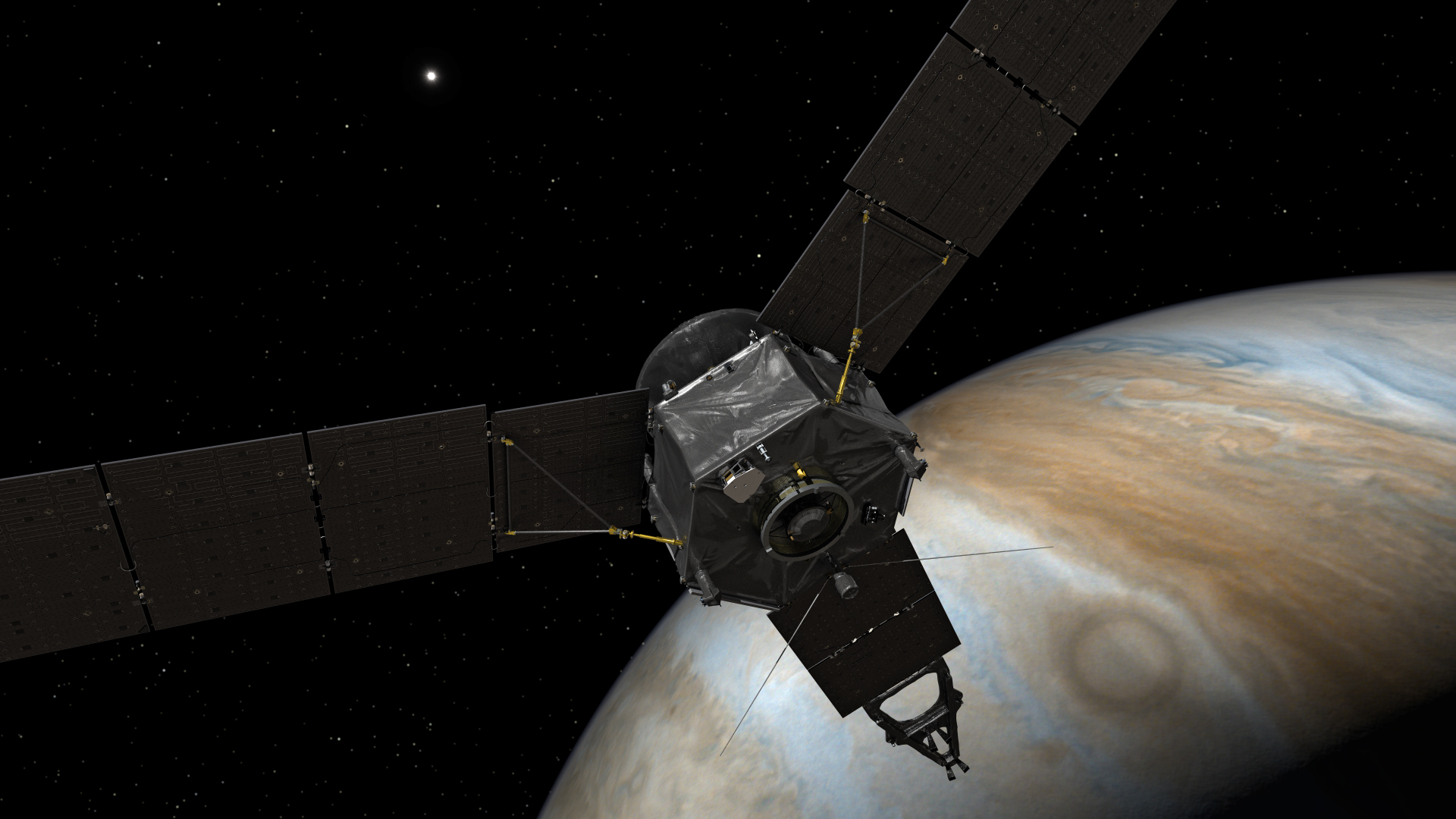
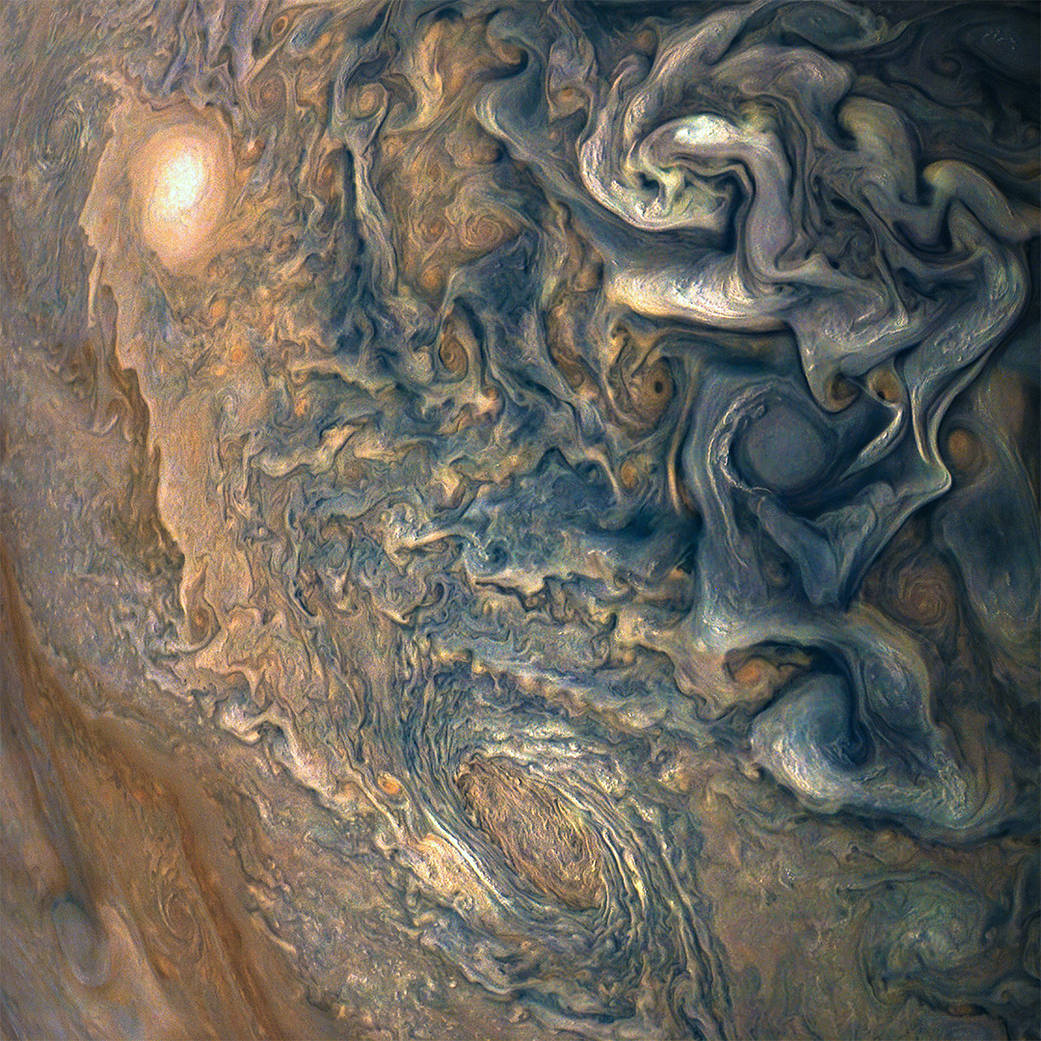
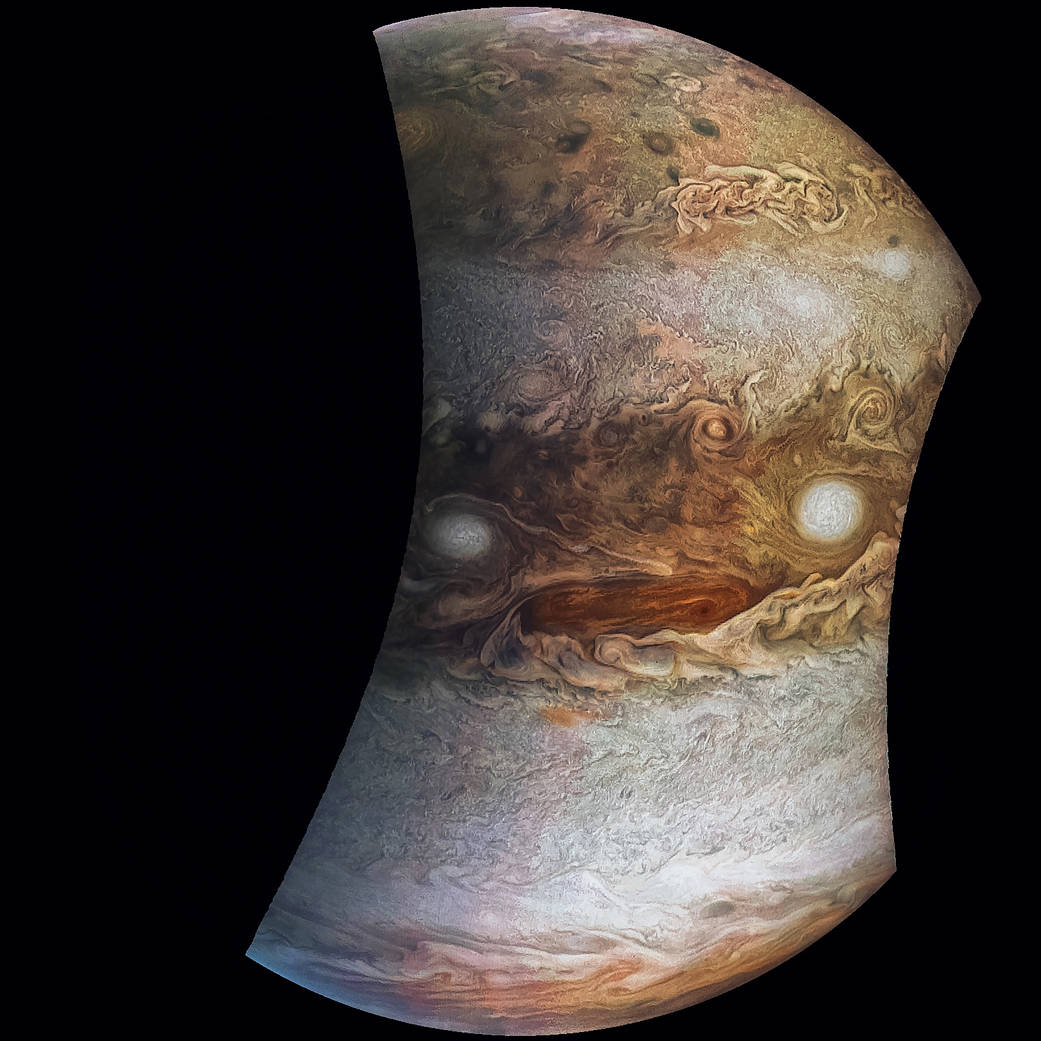
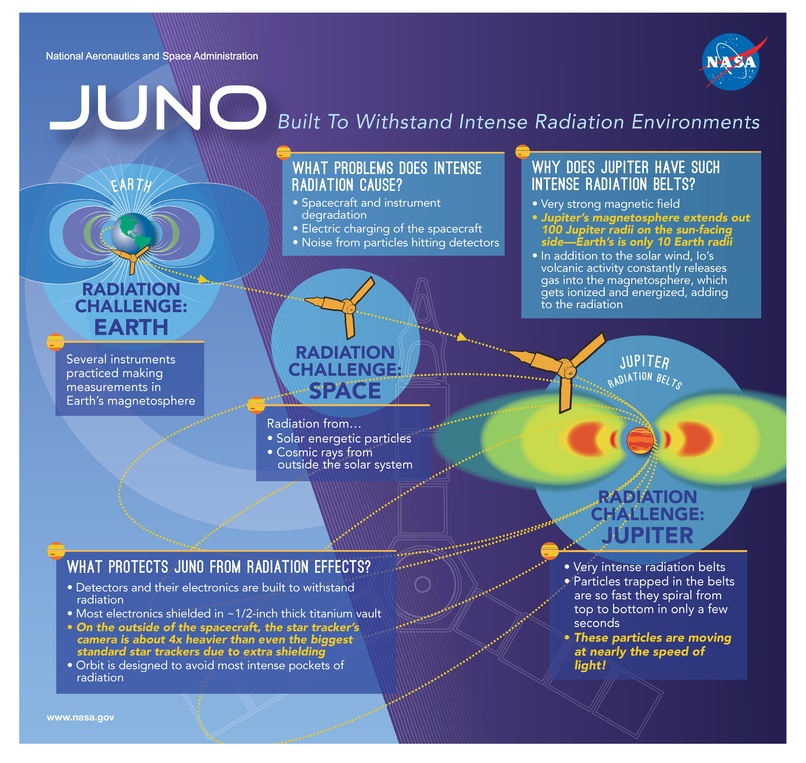
Juno launch
Juno Spacecraft
Jupiter's Cloud Bands
Jupiter's South Pole
Juno
Swirling Clouds
Jupiter's Face
Juno Infographic



